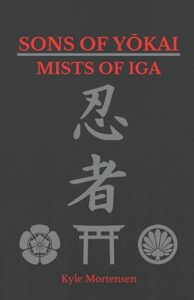I’m starting my roundup of all the summer movies based on books for kids with Fantastic Four: First Steps. Find out how many Snapes I gave this one based on its accuracy to the beloved comic books, and how being a mom affected the way I saw this movie.
Author: TQ Townsend
202 – Was Graham Linehan’s Arrest “Kafkaesque” and “Orwellian”?
I am very nervous about publishing this episode, because it could bring me unwanted attention. But things have changed to the point where I no longer feel that simply doing my best to be decent will protect me. Free speech is precious, and it’s a principle we should all stand up for, even when it means supporting the rights of someone whose substance or style may not be our cup of tea.
There’s a lot of tension in Britain right now over the issue of free speech, policing, and control of the internet. Two terms with literary origins — “Kafkaesque” and “Orwellian” — are showing up a lot in conversations about the situation in the country where I live, so I thought I would take the example of Graham Linehan’s arrest by the Metropolitan Police in Britain to show why commentators are making connections to terms that relate to books such as “The Trial” by Franz Kafka and “Animal Farm” or “Nineteen Eighty-four” by George Orwell.
201 – Fireside Fairy Tale: Tommelise
This story comes to you by the fire pit at a family member’s house back home in California. The evening is warm, the sea breeze is pleasant, and the bright full moon is shining. So settle in and enjoy my translation of Tommelise by Hans Christian Andersen, which is usually given the title “Thumbelina” in English.
This translation was a delight for me to do, as Andersen’s prose is very simple and clean. It was easy to be pretty direct when turning it into English, and I found that the story required very little commentary or clarification, so I hope you enjoy this lovely story, recorded in the hills of California under a beautiful full moon, as much as I did.
200 EPISODES!
This is the 200th audio episode of The Children’s Literature Podcast! All we can say is THANK YOU THANK YOU THANK YOU!
Oh, and I suppose we can say a bit in response to your questions.
199 – The Original Three Bears Got Sweet Revenge
The first recorded version of The Three Bears was a poem written and illustrated by Eleanor Mure for her little nephew’s birthday in 1831. It was never published, but was handed down through the years and now resides in the Toronto Public Library’s manuscript collection.
This version of the story is hilarious, with a poetic styling that reminds me of Dr. Seuss’ writing and the goofiness of a Looney Tunes cartoon. I also love that we know the specific author of this story, and that she was clearly the kind of aunt that every kid wants to have!
In the captions for the video version, I have preserved the original spelling and punctuation as written by Eleanor Mure.
198 – Amazon’s War of the Worlds Is a Waste of Ice
I did not like this film.
197 – Mists of Iga: Teen Ninjas, Cool Swords, and Abiding Friendships
My brother, Kyle Mortensen, published a wonderful indie book shortly before he died in an accident. He intended to publish three more books in this exciting historical fiction series set during the Warring States period in Japan, but I try to be glad that we at least have the first book, Mists of Iga, which is an action-packed tale of brotherhood, adventure, and mystery that teenagers will get swept up in.
This is a story about orphaned teenage boys who are guided and cared for by two of their father’s friends. It’s an exciting tale with peril, adventure, and great action scenes, but it’s also a story that models the kind of healthy relationships teens need to have with caring adults in order to reach their full potential.
You can purchase a copy of Mists of Iga here. All proceeds go to support Kyle’s wife and three young sons.  https://youtu.be/LzvYQ4DTDN8
https://youtu.be/LzvYQ4DTDN8
196 – The Rainbow Fish is Dystopian Horror
I am not a fan of The Rainbow Fish by Marcus Pfister. It’s a book that portrays mooching, bullying, and gaslighting as good things, but lots of people don’t notice that because, well, it’s really, really pretty.
195 – James Gunn’s Superman is . . .
Middling movies are the hardest to review!
194 – George Orwell Predicted AI Art
This show starts with some hilariously wholesome news about how Fantastic Mr. Fox broke into the Twickenham Library, and of course Orkney Library had to weigh in.
Then it’s on to our main segment, which is just a tad heavier what with it being about how the current challenges presented by AI art were forseen by George Orwell . . . way back in 1949.
